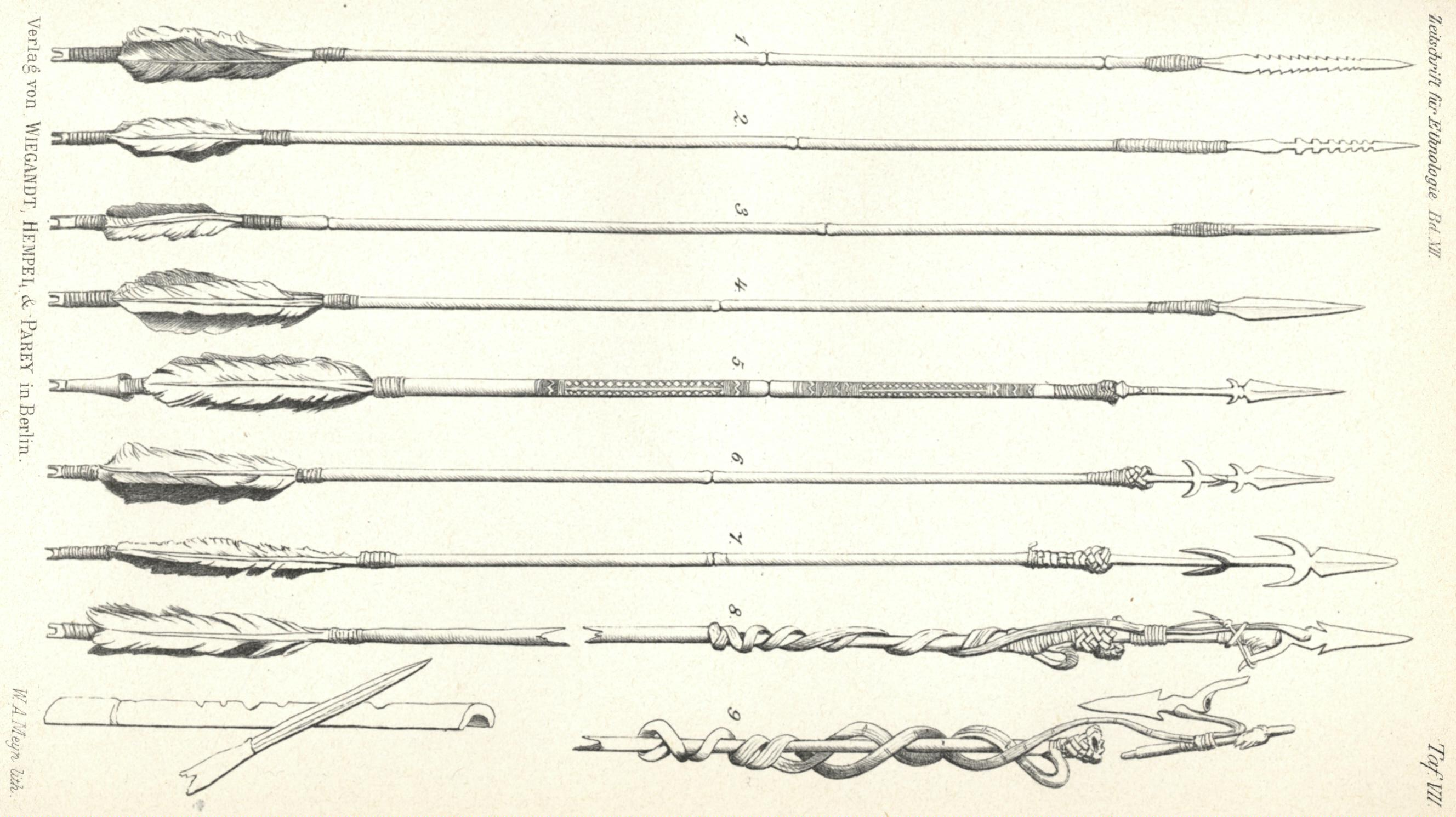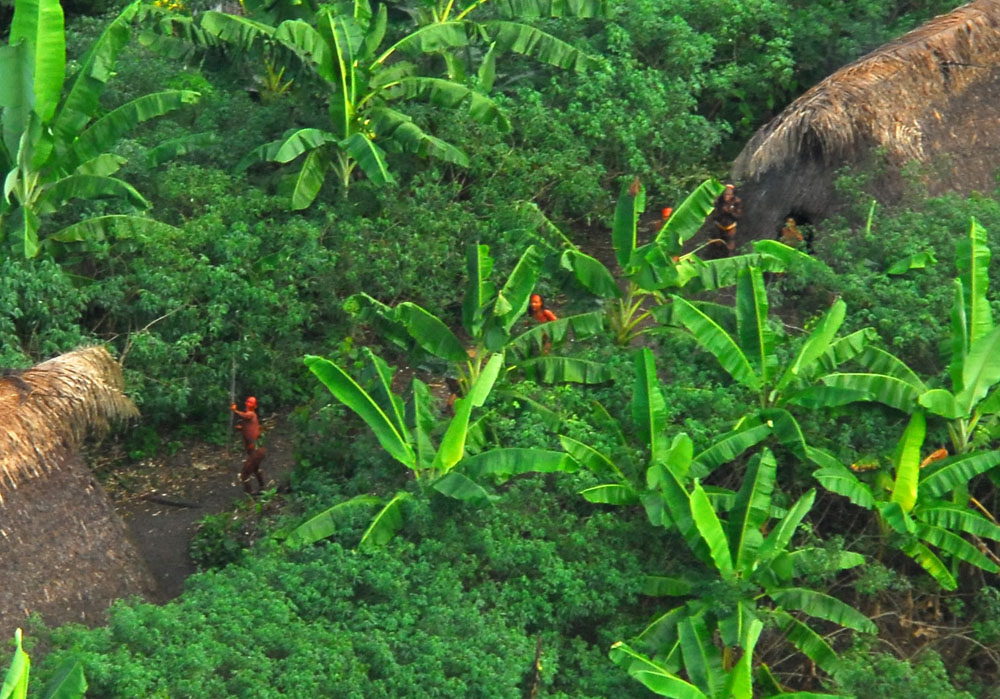The Nomole
The Amazon Forest of Peru is home to 15 indigenous groups who have chosen to remain uncontacted from the rest of the world. But in recent years, one tribe has chosen to make themselves known to outsiders: The Nomole. This is what we know about their fascinating story.

Making Contact With An Isolated Tribe
We still don’t know much about the Nomole tribe, and what we do know is steeped in tragedy. As companies have encroached on their land over the last decades and even centuries, there have been several encounters with these mysterious people—and not all of them have been peaceful.
Their History
The Nomole people have called Peru home for centuries, with archeological evidence suggesting they’d been living in the Amazon rainforest long before contact with Europeans.
 Photograph provided by Sidney G. Paternoster on Wikimedia
Photograph provided by Sidney G. Paternoster on Wikimedia
A Changing Landscape
The Peruvian rubber boom, which lasted from 1870 to 1918, saw an influx of Europeans to the Amazon Forest. While the rubber boom was a means to riches for these colonial explorers, it was a death sentence for the tribe.
 Photograph taken by Silvino Santos, published by Carlos Rey de Castro on Wikimedia
Photograph taken by Silvino Santos, published by Carlos Rey de Castro on Wikimedia
A Massacre For Money
In 1894, a private militia belonging to rubber baron Carlos Fitzcarrald massacred nearly all of the Nomole tribe. Those who survived somehow had it worse, however, as they were enslaved. Except, that is, for a lucky few.
Running For Their Lives
The remaining Nomole people who were not killed or taken escaped deeper into their forest. Understandably, they then cut themselves off from the rest of the world.
They remained completely uncontacted after that until the late 1990s. When they finally were found, it was for an awful reason.
Rediscovered In The 20th Century
It was only when oil companies and illegal loggers ventured further into the remote corners of the Amazon rainforest, looking for fresh wood and money, that they found the Nomole again.
 Douglas Fernandes from Belo Horizonte, Brasil. on Wikimedia
Douglas Fernandes from Belo Horizonte, Brasil. on Wikimedia
Their Population
At that time in the 1990s, it was estimated that there were up to 250 members of the tribe. Since then, the tribe has grown, with new estimates suggesting there may be anywhere from 600 to 800 Nomole living in Peru.
Their Environment
The Nomole live deep within in Manu National Park, which is in Peru's Madre de Dios region.
Their Culture
The Nomole are nomadic hunter-gatherers, which has allowed them to survive in the most isolated regions of the Amazon rainforest.
Their Daily Life
Not much is known about their daily life, but from the few encounters they’ve had with the outside world, we know that they are very good at climbing trees.
 Internet Archive Book Images on Wikimedia
Internet Archive Book Images on Wikimedia
Where They Live
From temporary shelters that have been left along river banks, we know that Nomole huts are usually made of palm leaves and raised on stilts to protect them from flooding.
What They Eat
Since most of these huts have been found along rivers, scientists believe the tribe uses them for fishing during Peru’s dry season, while they return to the depths of the forest during the wet season.
What They Do
The Nomole also make a special kind of booze by fermenting fruits in bamboo pods, and we’ve learned they often name themselves after the flowers and plants in the forest.
Their Language
The Nomole speak a dialect of the Piro language, which is a group of languages that are spoken in the Peruvian Amazon.
An Oral Tradition
Scientists have not been able to find evidence of a written form of their language, which has made it difficult to improve our ability to understand or communicate with the tribe.
Different Names
The Nomole people are also called the Cujareño people or the Mascho-Piro. However the Nomole tribe would never use the word "Mascho" to describe themselves, at it means something deeply offensive.
What Not To Call Them
The term "Mascho" first came about from colonists to describe the Harakmbut people, a different Indigenous tribe of Peru. More than that, it also means "Savages" in the Piro language.
 Sidney G. Paternoster credited as the source on Wikimedia
Sidney G. Paternoster credited as the source on Wikimedia
What They Call Themselves
After sporadic encounters with outsiders over the years, and a few cases of the tribe settling in non-native villages, some locals have been able to learn a little bit of their language. This is how we know that they call themselves “Nomole,” and that it means "relative".
 Sidney G. Paternoster on Wikimedia
Sidney G. Paternoster on Wikimedia
Inner Communities
The Nomole's Piro language is similar enough to the Yine language that they can communicate with the nearby Yine. In fact, Yine villagers will sometimes plant a garden on their edges so that the Nomole can use them.
Encounters With Outsiders
While the Peruvian government maintains a strong policy of no contact with isolated tribes, the Nomole have been slowly reaching out to the rest of the world. There have been several cases of Nomole leaving the forest to ask for food and supplies from Peruvian villagers.
Often, these encounters are peaceful and brief—but it’s easy for things to take a deadly turn.
 Euclides Da Cunha (1866 – 1909) on Wikimedia
Euclides Da Cunha (1866 – 1909) on Wikimedia
Violence With Outsiders
In 2010, a villager named Nikolas "Shaco" Flores befriended the Nomole. For a year, he gave them tools, bananas, and machetes. But when he stopped supplying the tribe with goods, their relationship took a dark turn.
Violence With Outsiders: The Aftermath
In November 2011, for reasons that are still not completely clear, the Nomole appeared to begin targeting Shaco. Eventually, authorities found Shaco's body with a (likely Nomole) bamboo-tipped arrow in his heart.
 Alexander Schadenberg on Wikimedia
Alexander Schadenberg on Wikimedia
Raids On Villages
Another dangerous encounter with the tribe took place in December 2015, when 200 Nomole warriors stormed the village of Monte Salvado.
 McKay Savage from London, UK on Wikimedia
McKay Savage from London, UK on Wikimedia
Raids On Villages: The Aftermath
Although the Nomole shot arrows at the villagers, no one was injured, and the men left after taking food, blankets, rope, and machetes. But there may have been a more disturbing reason for this violence.
 Earth Science and Remote Sensing Unit, Lyndon B. Johnson Space Center on Wikimedia
Earth Science and Remote Sensing Unit, Lyndon B. Johnson Space Center on Wikimedia
How They Protect Themselves
While this last encounter was more volatile than many previous ones, the government believed it was motivated by a need for supplies, since much of the traditional Nomole hunting grounds have been destroyed by illegal loggers. As it turns out, this is a very dire situation.
Their Struggle To Survive
As oil companies and illegal loggers continue to expand into the Amazon rainforest and encroach on the Nomole's traditional lands, there are concerns about how the tribe will survive in the coming years. Illegal logging is the biggest threat to the tribe, as the deforestation that it causes destroys the ecosystem that is vital to their survival.
With less food to hunt and fewer raw materials to make crucial supplies for survival, instances of the Nomole reaching out for aid are likely to increase. And they have other troubles to worry about, too.
 Bill Bouton from San Luis Obispo, CA, USA on Wikimedia
Bill Bouton from San Luis Obispo, CA, USA on Wikimedia
Battling Diseases
While many may think that the Peruvian government’s policy of no contact with the Nomole is for the protection of non-natives, it is actually meant to protect the tribe. Exposure to disease is a great concern, since the Nomole's isolation has made their immune systems weak to illnesses from the outside world.
 Photo Credit: Janice Carr Content Providers(s): CDC/ Dr. Ray Butler; Janice Carr on Wikimedia
Photo Credit: Janice Carr Content Providers(s): CDC/ Dr. Ray Butler; Janice Carr on Wikimedia
Assimilation Isn't Unheard Of
Encounters with outsiders also threaten to impact the tribe’s unique culture, especially if they begin to assimilate with non-native villagers. While encounters with the tribe are still brief, there have been three recorded cases of Nomole women leaving the tribe and settling in nearby Peruvian villages.
Photo Evidence
The Peru Ministry of Environment released a video in 2011 showing some of the Nomole. Additionally, in recent years an Italian tourist to Manu National Park also managed to capture a rare image of the tribe.
 Gleilson Miranda/Secretaria de Comunicação do Estado do Acre on Wikimedia
Gleilson Miranda/Secretaria de Comunicação do Estado do Acre on Wikimedia
Recent Sightings
Just recently, in July 2024, videos and images of dozens of as-yet uncontacted Nomole people emerged from the company Survival International. The Nomole were on the banks of a river, frighteningly near a series of logging concessions.
 Gleilson Miranda / Governo do Acre on Wikimedia
Gleilson Miranda / Governo do Acre on Wikimedia
Recent Violence
As logging gets ever closer, the violence also seems to rise. In September 2024, just months ago, a group of Nomole who had never been seen or heard from before came into contact with at least two loggers. They attacked and killed the outsiders, likely believing they were encroaching on their land.
 Gleilson Miranda / Governo do Acre on Wikimedia
Gleilson Miranda / Governo do Acre on Wikimedia
The Future Of The Nomole
As the modern world invades their isolation, the Nomole tribe finds themselves facing an uncertain future. Today’s billion-dollar corporations are as ruthless as the rubber barons of the past, and reaching out for help from the outside world presents its own unique challenges for the Nomole tribe.
Luckily, their history is one of resilience, and this offers a glimmer of hope for the survival of this unique group of people.
 Gleilson Miranda / Governo do Acre on Wikimedia
Gleilson Miranda / Governo do Acre on Wikimedia























